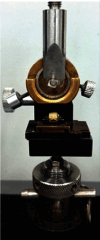Exploring Zirconia Adhesion: Pre and Postsintering Physical Surface Treatment, Chemical Treatment, and Cement Interactions
- PMID: 39220997
- PMCID: PMC11362578
- DOI: 10.1155/2024/5394652
Exploring Zirconia Adhesion: Pre and Postsintering Physical Surface Treatment, Chemical Treatment, and Cement Interactions
Abstract
Background: Adhesion to zirconia remains a significant dental challenge. This study is aimed at assessing the bond strength of zirconia based on surface treatment with pre or postsintering sandblasting associated with different chemical treatments and resin cements. Methods: Zirconia blocks were divided into 12 experimental groups based on the surface treatment (presintering sandblasting or postsintering sandblasting/tribochemical abrasion treatment), chemical treatment (none, Single Bond Universal, or Signum Zirconia Bond), and choice of cement (Panavia F or RelyX™ U200). The bond strength was measured by shear tests using a universal testing machine. The fracture analysis was performed using stereomicroscopy. Data were analyzed using three-way ANOVA and Tukey's test (α = 5%). Results: Triple and double factor's interactions were not significant (p > 0.05). Regarding the surface treatment factor, the bond strength following postsintering sandblasting treatment associated with tribochemical abrasion (9.15 ± 3.62 MPa) was significantly higher than presintering sandblasting treatment (5.24 ± 3.53 MPa). Concerning the chemical treatment factor, bond strengths were ranked as follows: Signum Zirconia Bond > Single Bond Universal > no treatment. The bond strength of the resin cements did not differ among them. Most fractures (67%) were classified as adhesive, and 32% were categorized as mixed fractures. Conclusion: Surface treatment via postsintering sandblasting combined with tribochemical abrasion demonstrated superior efficacy than in presintering sandblasting. Additionally, chemical treatment with zirconia primer increased the bond strength of zirconia irrespective of the surface physical treatment.
Keywords: adhesives; resin cements; sandblasting; shear strength; zirconia.
Copyright © 2024 Flávia Gonçalves et al.
Conflict of interest statement
The authors declare no conflicts of interest.
Figures


Similar articles
-
Effect of combining different 10-MDP-containing primers and cement systems on shear bond strength between resin cement and zirconia.BMC Oral Health. 2025 Feb 8;25(1):206. doi: 10.1186/s12903-025-05578-2. BMC Oral Health. 2025. PMID: 39923049 Free PMC article.
-
Can application of universal primers alone be a substitute for airborne-particle abrasion to improve adhesion of resin cement to zirconia?J Adhes Dent. 2015 Apr;17(2):169-74. doi: 10.3290/j.jad.a33974. J Adhes Dent. 2015. PMID: 25969840
-
Effects of Cleaning Protocols on Resin Bond Strength to Saliva-Contaminated Monolithic Zirconia.J Adhes Dent. 2025 Apr 30;27:93-102. doi: 10.3290/j.jad.c_2011. J Adhes Dent. 2025. PMID: 40304226 Free PMC article.
-
Bonding Efficacy of Universal Resin Adhesives to Zirconia Substrates: Systematic Review and Meta-Analysis.J Adhes Dent. 2023 Feb 6;25:51-62. doi: 10.3290/j.jad.b3868649. J Adhes Dent. 2023. PMID: 36744830 Free PMC article.
-
Which Zirconia Surface-cleaning Strategy Improves Adhesion of Resin Composite Cement after Saliva Contamination? A Systematic Review and Meta-Analysis.J Adhes Dent. 2022 Apr 13;24:175-186. doi: 10.3290/j.jad.b2916437. J Adhes Dent. 2022. PMID: 35416445 Free PMC article.
Cited by
-
Multifunctional resin-matrix ceramic: synergistic mechanical-biological optimization and novel strategies for translational research.RSC Adv. 2025 Jul 7;15(29):23351-23363. doi: 10.1039/d5ra02325d. eCollection 2025 Jul 4. RSC Adv. 2025. PMID: 40626058 Free PMC article. Review.
References
MeSH terms
Substances
LinkOut - more resources
Full Text Sources

